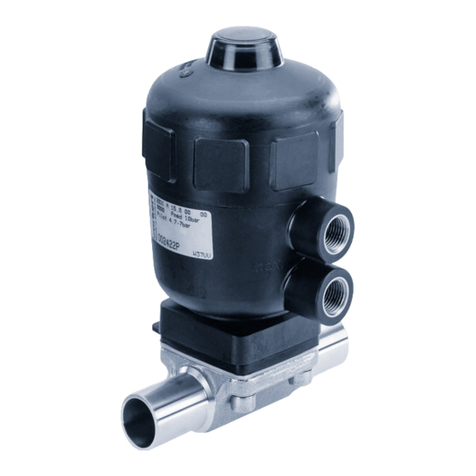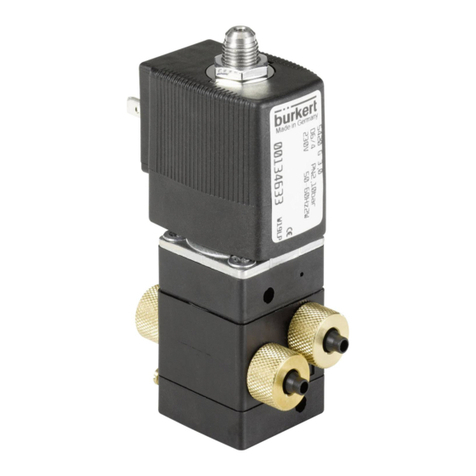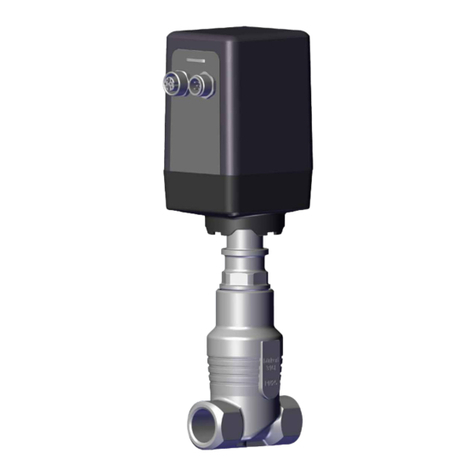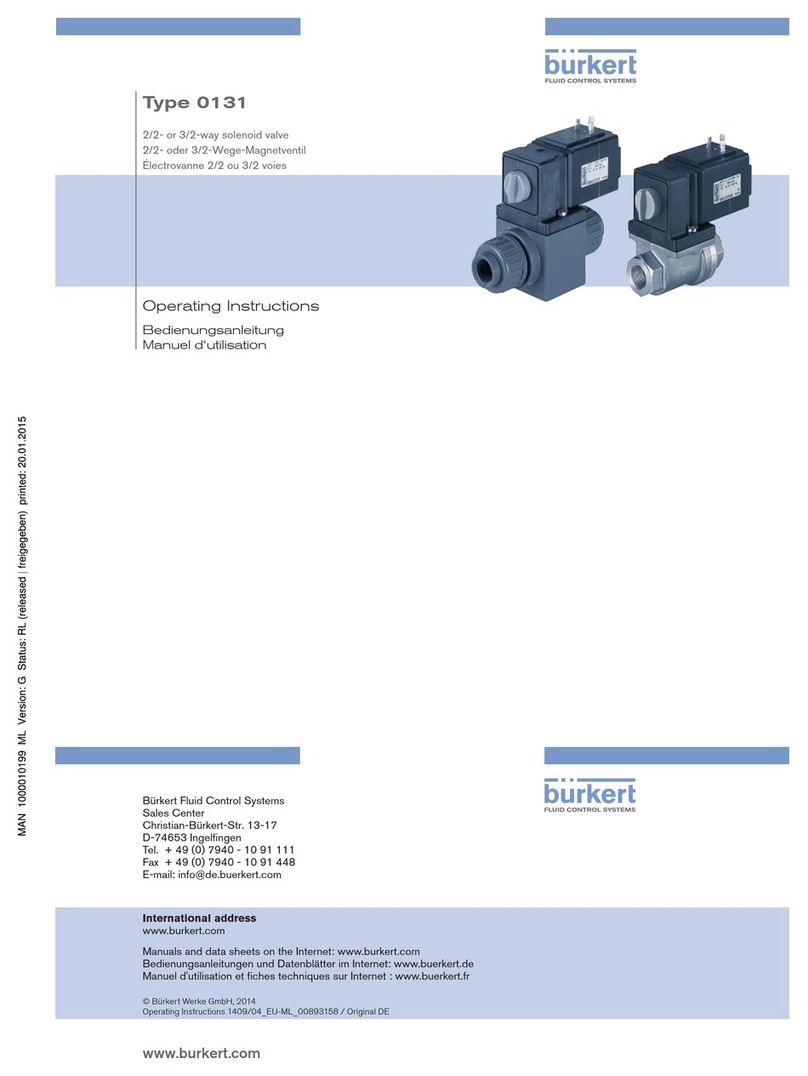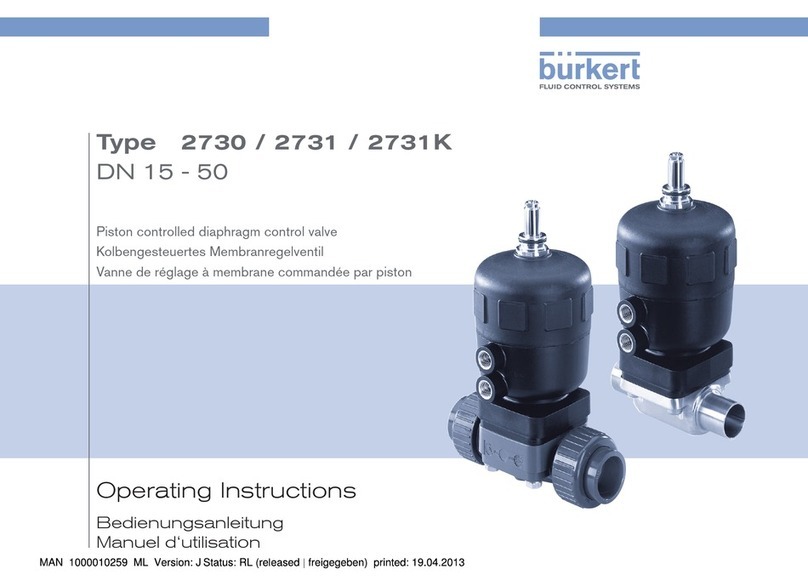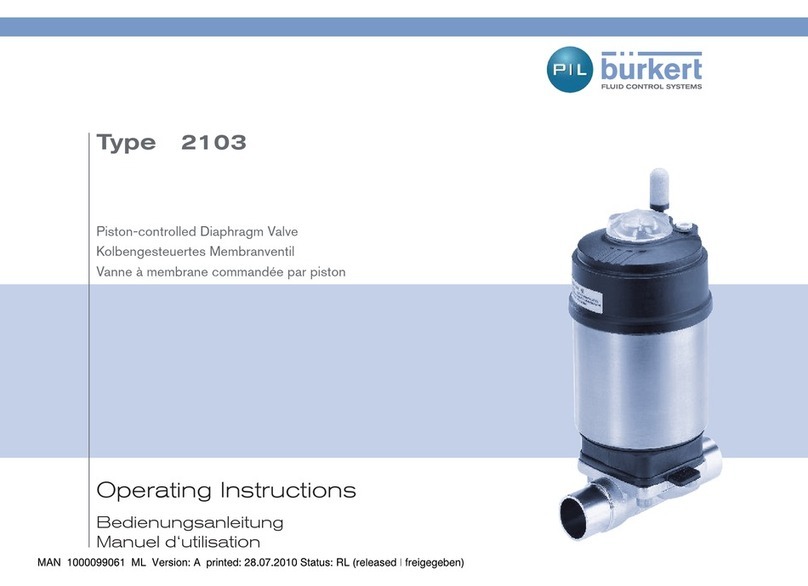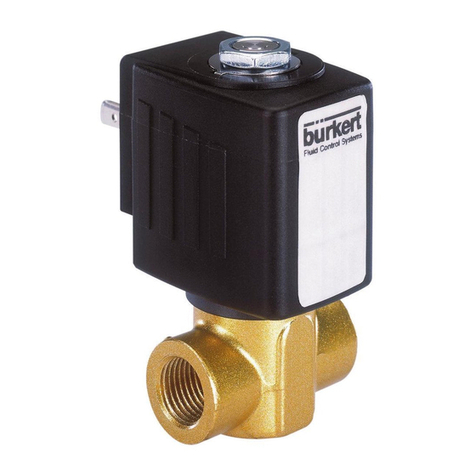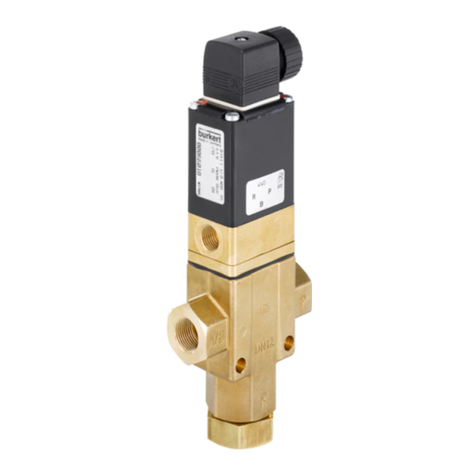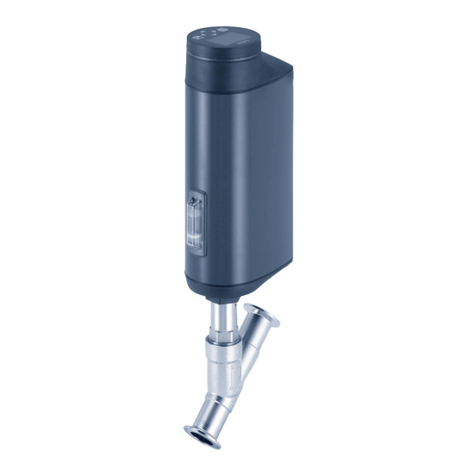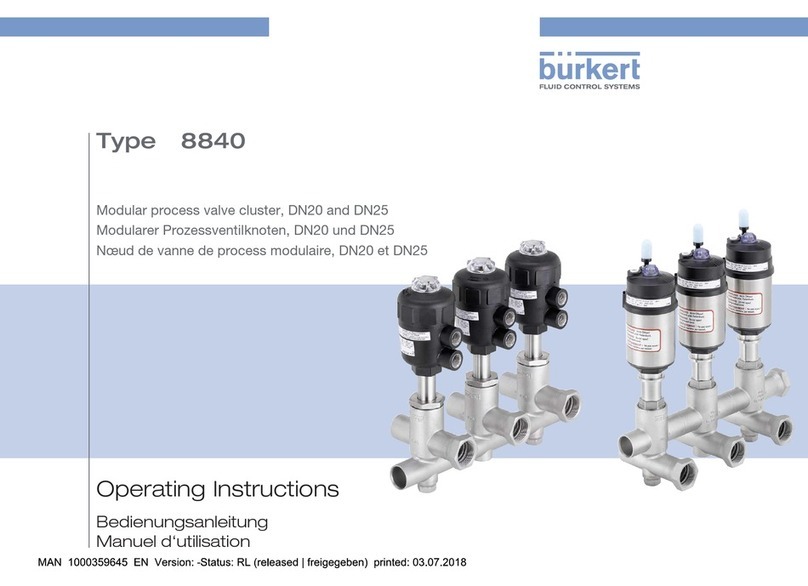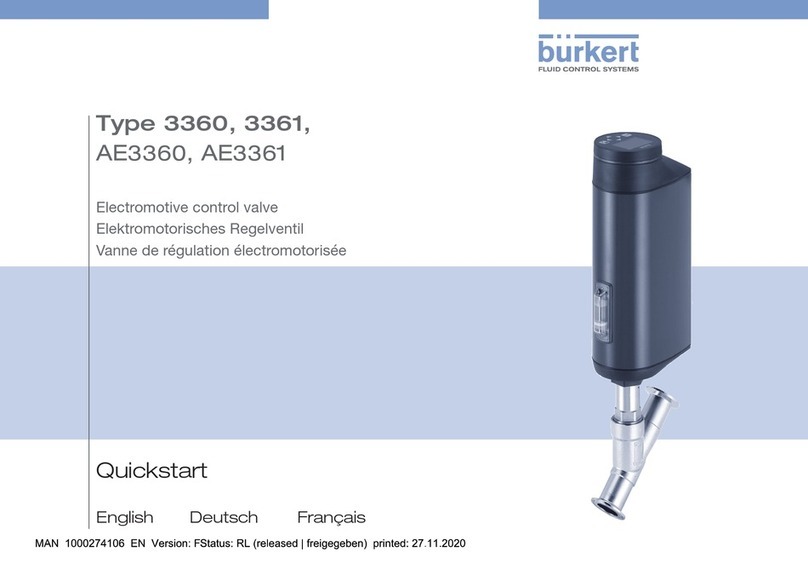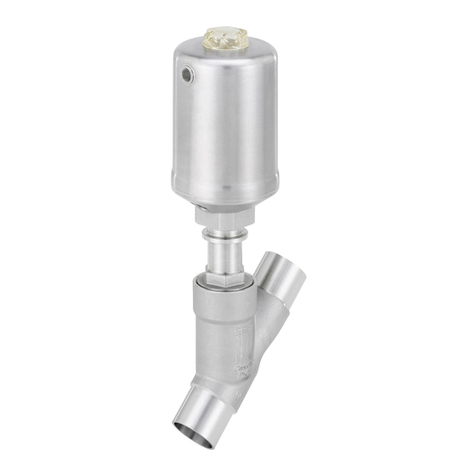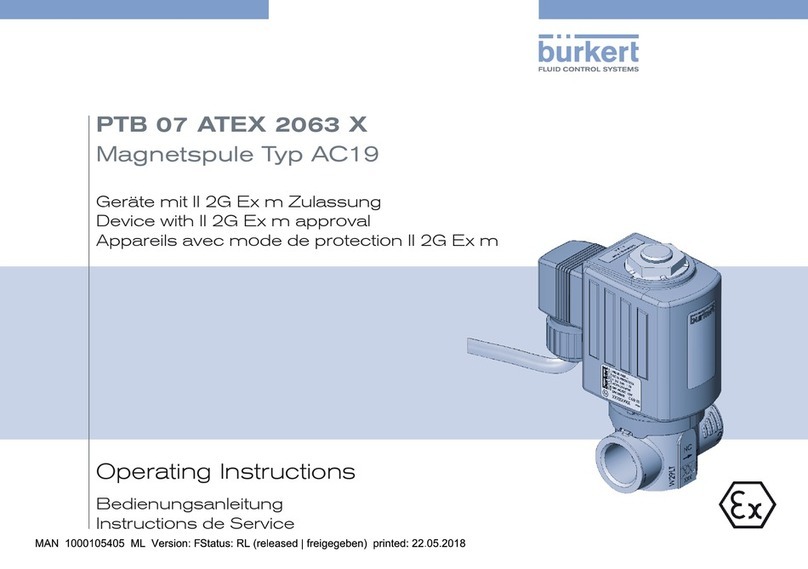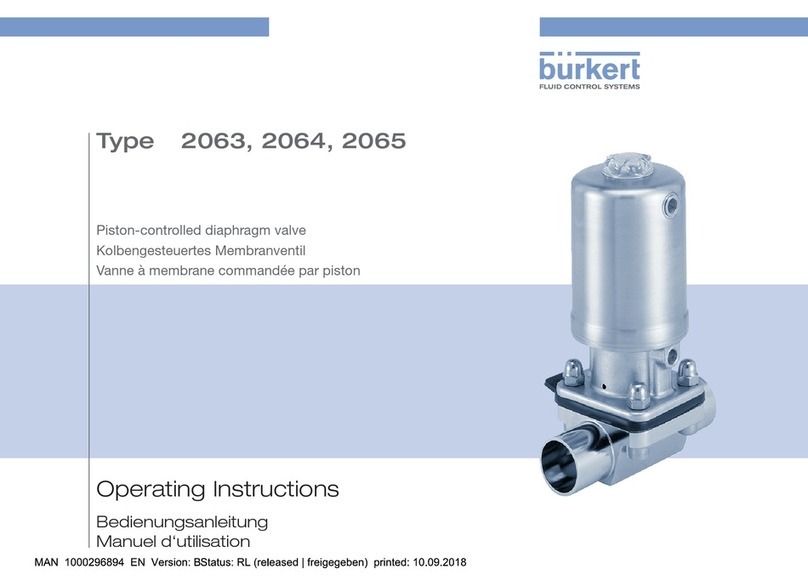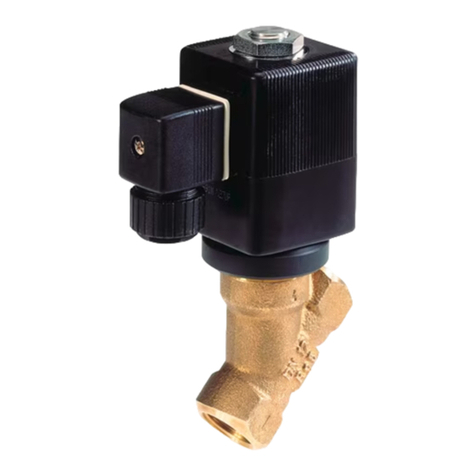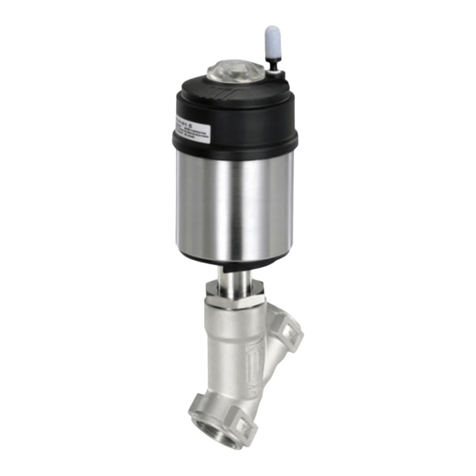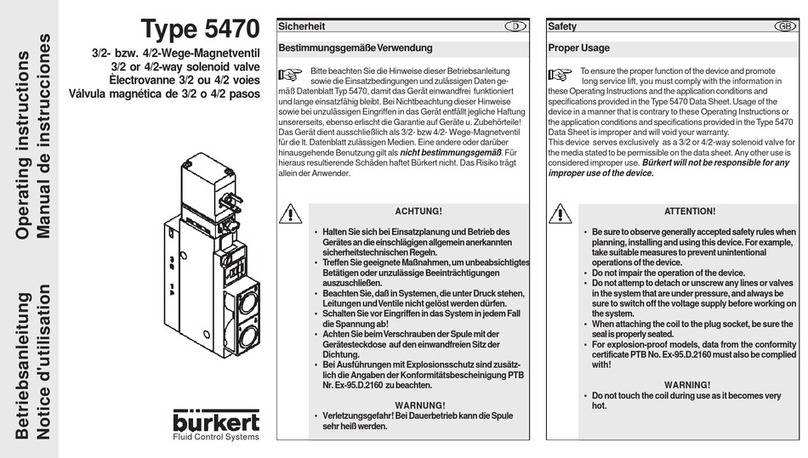
5
Basic Safety Instructions
Typ 2300
4 BASIC SAFETY INSTRUCTIONS
These safety instructions do not make allowance for any
• contingencies and events which may arise during the installation,
operation and maintenance of the devices.
• local safety regulations; the operator is responsible for observing
these regulations, also with reference to the installation personnel.
Danger – high pressure!
▶Before loosening the lines and valves, turn off the pressure and
vent the lines.
Risk of electric shock!
▶Before reaching into the device, switch off the power supply
and secure to prevent reactivation!
▶Observe applicable accident prevention and safety regulations
for electrical equipment!
Risk of burns!
The surface of the device may become hot during long-term
operation.
▶Do not touch the device with bare hands.
Risk of injury from moving parts in the device!
▶Do not reach into openings.
Risk of injury when opening the actuator!
The actuator contains a tensioned spring. If the actuator is opened,
there is a risk of injury from the spring jumping out.
▶The actuator must not be opened.
General hazardous situations.
To prevent injury, ensure that:
▶The system cannot be activated unintentionally.
▶Installation and repair work may be carried out by authorised
technicians only and with the appropriate tools.
▶After an interruption in the power supply or pneumatic supply,
ensure that the process is restarted in a defined or controlled
manner.
▶The device may be operated only when in perfect condition and
in consideration of the operating instructions.
▶The general rules of technology apply to application planning
and operation of the device.
To prevent damage to property of the device, ensure:
• Supply the media connections only with those media which are
specified as flow media in the chapter entitled “Technical data”.
• Do not put any loads on the valve (e.g. by placing objects on it
or standing on it).
• Do not make any external modifications to the valves. Do not paint
the body parts or screws.
english


